Introduction: In this article, Melissa Davenport Berry writes more about the ghost of William Coffin that still haunts his home on Nantucket Island, Massachusetts. Melissa is a genealogist who has a blog, AnceStory Archives, and a Facebook group, New England Family Genealogy and History.
Today I continue with my story on William Coffin (1756-1835), the spook who haunts his Nantucket home according to local lore. There is even an account of the ghost Coffin from Peter Benchley, author of the thriller Jaws, who spent a summer on Nantucket Island in the specter’s home and saw the ghost (see Part 1 of this series).
It is suspected that Coffin’s spirit cannot rest. Although a prominent figure in his time, he was falsely accused in the first bank robbery in America, that occurred in 1795.
Whether you believe in ghosts or not, the story of William Coffin and the Great Nantucket Bank Robbery will surely send a chill up your spine.
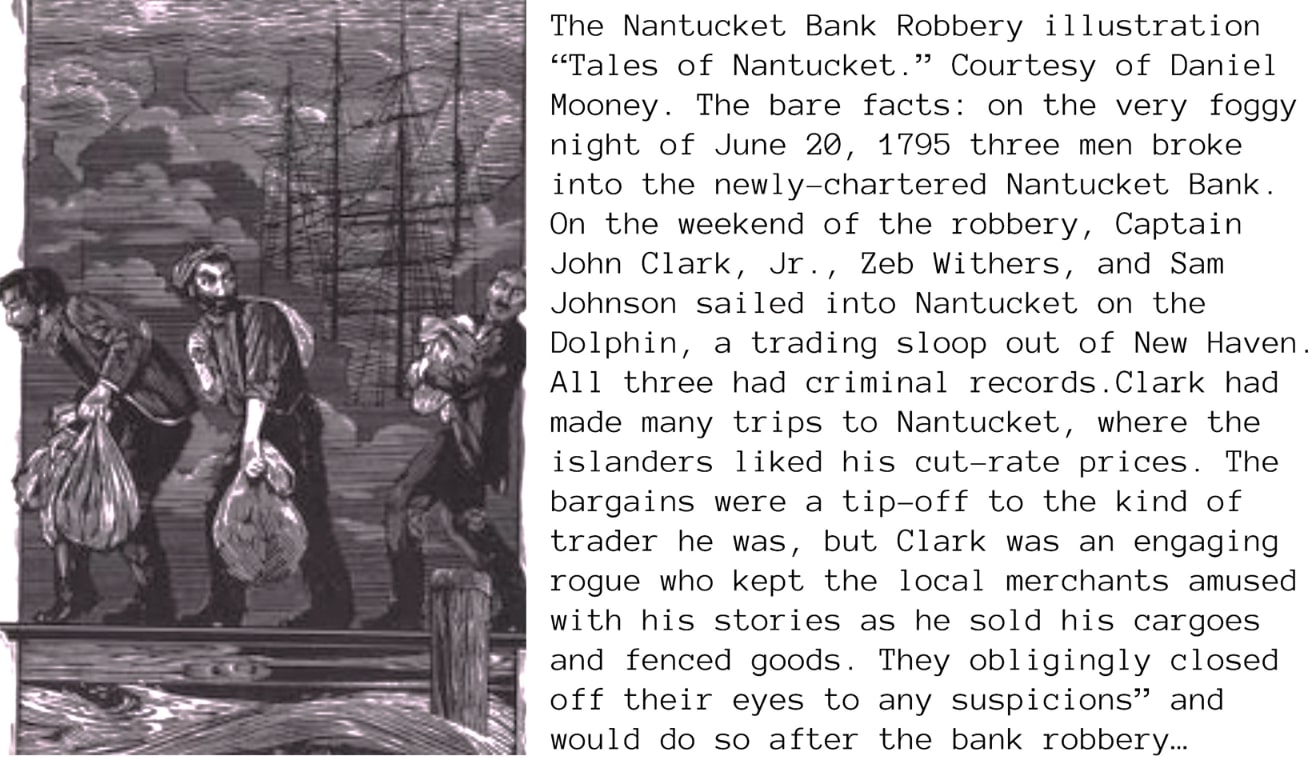
Even though the bank bandits listed in the above caption were the proven suspects (not brought to light until years later), many on the island wanted Coffin nabbed for the crime. Coffin was one of the bank’s officers, fingered by others on the bank’s board and – more surprisingly – his own cousins.
Before I present the conspiracy and explain why Coffin was targeted, here are some of the early reports about the robbery and suspects that I found in both written accounts and in my searches in GenealogyBank’s Historical Newspaper Archives.
One of the written accounts I used was from diarist Kezia Coffin Fanning (1759–1820), born to John Coffin and “She Merchant” Kezia Folger. The diarist Kezia married attorney Phineas Fanning, son of Col. Phineas Fanning and Mehitable Wells, and left many descendants.
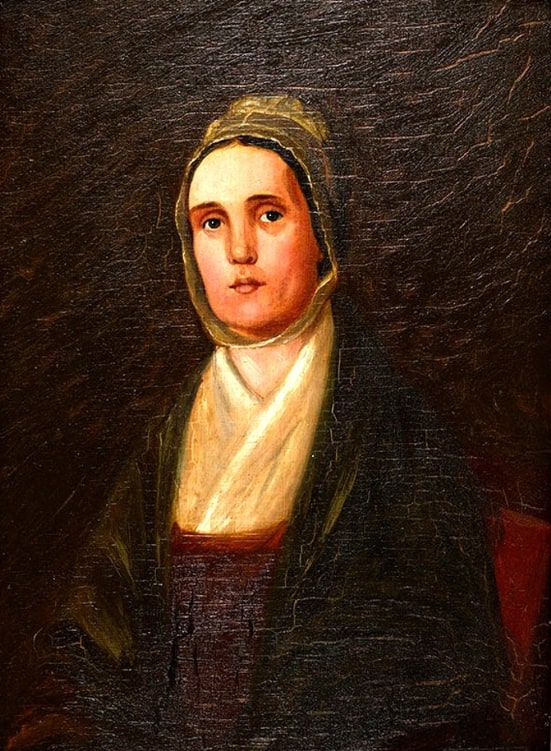
Here is a diary entry from Kezia Coffin Fanning dated 26 June 1795, a Friday:
A general alarm – the Nantucket Bank robbed of a large sum of money. It is supposed keys were made for the purpose. There were five locks to unlock & two iron doors to open. It was thought to be quite secure. A handkerchief was found in the vault which appeared to be very greasy.
It was supposed to be [Randall] Rice’s [the handkerchief had initials R.R.]. He was a butcher [he owned a slaughterhouse] and as a consequence of which he & Joseph Nichols and his son were taken last night by warrants and put into James Barker’s store, not being allowed to speak to each other nor any one alone.
All the reasons that I have given for taking up the Nicholses is because they and Rice are very intimate. There came about 1 o’clock a number of the proprietors of the bank and searched Nichol’s house and all around the hill & bank. They went to Rice’s and did the same without success. In the afternoon they had a kind of trial before two magistrates & then were dismissed. It is said they have lost [$21,000 in gold coins and paper, about $488,000 today].
A slew of announcements on the robbery appeared in New England newspapers in early July. Here is one from the Independent Chronicle.
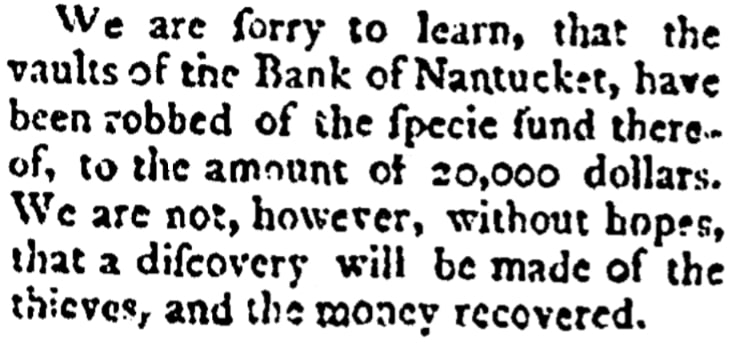
This article reported:
We are sorry to learn that the vaults of the Bank of Nantucket have been robbed of the specie fund thereof, to the amount of 20,000 dollars. We are not, however, without hopes that a discovery will be made of the thieves, and the money recovered.
The Medley or New Bedford Marine Journal published an advertisement offering a cash reward. It was placed by bank cashier George Folger Jr.
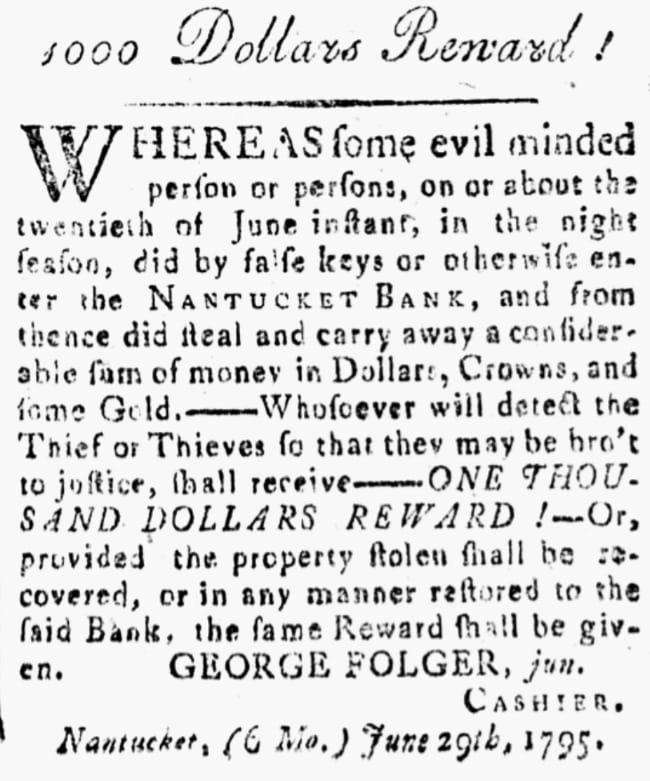
This reward notice read:
1000 Dollars Reward!
Whereas some evil minded person or persons, on or about the twentieth of June instant, in the night season, did by false keys or otherwise enter the Nantucket Bank, and from thence did steal and carry away a considerable sum of money in dollars, crowns, and some gold – Whosoever will detect the thief or thieves so that they might be bro’t to justice, shall receive – one thousand dollars reward! – Or, provided the property stolen shall be recovered, or in any manner restored to the said bank, the same reward shall be given. George Folger, jun. Cashier.
George Folger Jr. (1756-1802), son of George Folger and Sarah Coleman, married Rebecca Slocum, daughter of Peleg Slocum and Elizabeth Brown, leaving descendants.
Folger was a direct descendant of Tristram Coffin, Peter Folger and Mary Morril, and a 1st cousin to Lucretia Coffin Mott and Ben Franklin, as well as the grandfather to James Athearn “J. A.” Folger Sr., founder of the Folgers Coffee Company and gr. grandfather of Henry Clay Folger, founder of Folger Shakespeare Library and Chairman of Standard Oil.
George’s cousin Walter Coffin Jr. was on the bank’s board, and was among the factions who believed William Coffin (also a cousin) was guilty. That will be in part 3 of this series, and it is some of the bad blood that created a hornets’ nest leaving a permanent sting on William Coffin’s soul.
In addition to the handkerchief, another reason Randall Rice was initially charged was due to a spat he had the night before the robbery with Walter Coffin Sr., but he would be taken off the list of suspects and replaced by William.
You must appreciate the old blood lines of these Nantucket Yankees from which most of the characters in this conspiracy story descend.
Here is a cartoon illustration of a Coffin family reunion, from The Coffin Saga: Nantucket’s Story, from Settlement to Summer Visitors by William Edward Gardner. The artist was Henry S. Wyer.
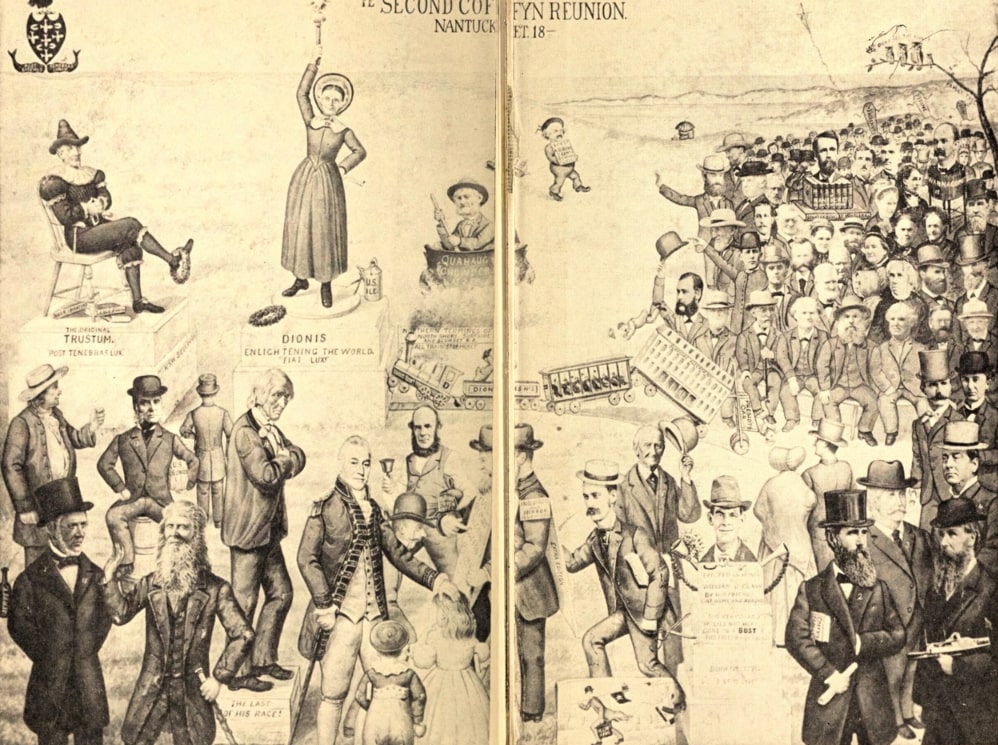
In his famous novel Moby Dick, Herman Melville wrote:
True enough, but then whalemen themselves are poor devils; they have no good blood in their veins. No good blood in their veins? They have something better than royal blood there. The grandmother of Benjamin Franklin was Mary Morrel; afterwards, by marriage, Mary Folger, one of the old settlers of Nantucket, and the ancestress to a long line of Folgers and harpooners – all kith and kin to noble Benjamin – this day darting the barbed iron from one side of the world to the other.
Two Nantucket attorneys, Andre Sigourney and Robert F. Mooney, wrote The Nantucket Way and Tales of Nantucket. In his book Away Off Shore: Nantucket Island and Its People, 1602-1890, Nathaniel Philbrick credited these two Nantucket attorneys for “providing an accurate and good account of the Nantucket Bank Robbery conspiracy from a lawyer’s perspective.”

Stay tuned!
Explore over 330 years of newspapers and historical records in GenealogyBank. Discover your family story! Start a 7-Day Free Trial
Note on the header image: 1870s Nantucket street scene by C. H. Shute & Son of Edgartown, Massachusetts. Credit: Wikimedia Commons.
Related Article:
